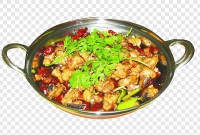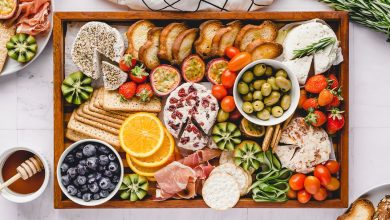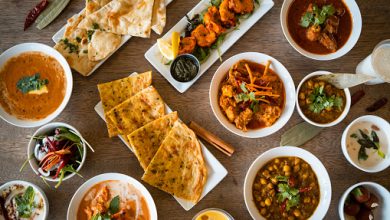Features of Indian cuisine
India is an incomprehensible and mysterious country for most Europeans. Indians attach particular importance to the food they eat. Food in India is more than just the process of absorbing nutrients and calories. The local cuisine is as varied as the climate, culture and geography.
Most people in India are vegetarians. The cuisine of northern India is rich in dishes of Central Asian origin. The famous tandoori originated from these same areas.
Eating cow meat is strictly prohibited by ancient customs and religious laws.
India is the birthplace of vegetarian food. This is due to the fact that in most regions of the country the climate is very hot – meat quickly deteriorates. Vegetables are collected in these areas three or even four times a year. However.
he main reason for not eating meat dishes is a religious prohibition. Here people do not eat garlic and onions, they refuse beets and tomatoes, because these vegetables are the color of blood. The basis of the food of southern Indians is boiled rice, yellow lentils, sweet peppers, dates.
Goan cuisine – fish and plants
For lovers of culinary exotic Goa is a vast field for experimentation. The usual daily menu of a Goan, regardless of his religion, necessarily includes rice (from local with thick brown grains to white, properly seasoned with basmati spices) and curry sauce. Seafood curry is called ummon or koddy. At nightfall, the lights of coastal restaurants are lit, where chefs are waiting for you with the day’s catch, just caught right before your eyes.

The locals have a fondness for different types of cheese (especially those that are similar to the familiar cheese), leafy vegetables called “tambdi bhaji” and “goenchi bhaji”, which are usually cooked with onions and shredded coconut. A popular side dish is breadfruit cooked in coconut milk. Of the local sweets, it is recommended to try sannas rice cakes fermented with coconut palm juice (“toddy”). Here you can try the branded Goan pork “vindalu” or pork sausages, which are recommended to be washed down with local moonshine “feni”.
But Goa is, of course, a paradise for vegetarians: in local restaurants you will be prepared with a variety of dishes from a variety of vegetables and fruits of local origin. You can have breakfast, lunch and dinner both at the hotel and in numerous restaurants in Goa, offering not only national.
but also typical European cuisine. Gourmets can also visit restaurants of Chinese, Thai or even Tibetan cuisine. Goa is a place where you can buy a liter of port or Old Monk rum for one dollar, and you can’t buy such excellent drinks anywhere else in the world and for much more money.
Speaking of price. Here you can find Peking duck for $5, kosher sushi and hummus, tapas and lasagna also for ridiculous money, and many people sometimes get a paradoxical impression: the cheaper the dish, the tastier it is. Fans of homemade cakes and sweets are best to go to the German Bakery coffee houses, which are on the balance sheet of the Tibetans, and for fast food – to the Israeli Falafel eateries.
Cooking in Goa is unusually delicious, regardless of the national characteristics of the establishment. The only difficulty that Europeans most often face is the abundance of hot spices, even in European dishes. Hot pepper can even be found in sweets.
because, according to the ideas of Ayurveda (see “Ayurveda in Goa”), any harmonious dish should contain all three tastes: sweet, sour and bitter. In addition, traditionally, pepper and other hot spices were used in India not only as flavorings, but also as a good and affordable antiseptic. That is why each dish is served with a plate of anise leaves, which can “put out the fire” in your mouth.
In the wise tradition of Ayurveda there is a very useful thought, or, if you like, a rule. If you have eaten and do not feel either hunger or satiety, then you are full. If you have eaten and feel that you have overeat, then you are sick … Bon appetit to you and be healthy!
Exotic cuisine of Goa
An extensive field for culinary experiments is the exotic cuisine of Goa. The standard daily menu of a Goan, regardless of his religion, always includes rice and curry sauce.
In fact, curry is coconut that is crushed on a basalt stone and at the same time spices are added, for example, such as cumin, coriander, turmeric, chilli pepper and garlic.
“Ummon” or “coddy” refers to seafood curried. Along with the onset of darkness, lights are lit at coastal restaurants, and they are waiting for their visitors with seafood that they caught from the sea during the day.

Fish fried in coconut oil called “tondak” is served with curry and rice. They also serve a salad of grated coconut and dried fried shrimp called “kissmoor” and shrimp patties.
Locals are very fond of various types of cheese, leafy vegetables, they are commonly called “goenchi bhaji” and “tambdi bhaji”. These dishes are usually made with shredded coconut and onions.
Breadfruit cooked in coconut milk is considered an excellent side dish.
Of the famous sweets of the island of Goa, it is advised to try rice cakes cooked in coconut palm juice.
culinary paradise
But Goa is, of course, a paradise for vegetarians: in local restaurants you will be prepared with a variety of dishes from a variety of vegetables and fruits of local origin. You can have breakfast, lunch and dinner both at the hotel and in numerous restaurants in Goa.
offering not only national, but also typical European cuisine. Gourmets can also visit restaurants of Chinese, Thai or even Tibetan cuisine. Goa is a place where you can buy a liter of port wine or Old Monk rum for one dollar, and you can’t buy such excellent drinks anywhere else in the world and for big money.
Speaking of price. Here you can find Peking duck for $5, kosher sushi and hummus, tapas and lasagna also for ridiculous money, and many people sometimes get a paradoxical impression: the cheaper the dish, the tastier it is. Fans of homemade cakes and sweets are best to go to the German Bakery coffee houses, which are on the balance sheet of the Tibetans, and for fast food – to the Israeli Falafel eateries.



